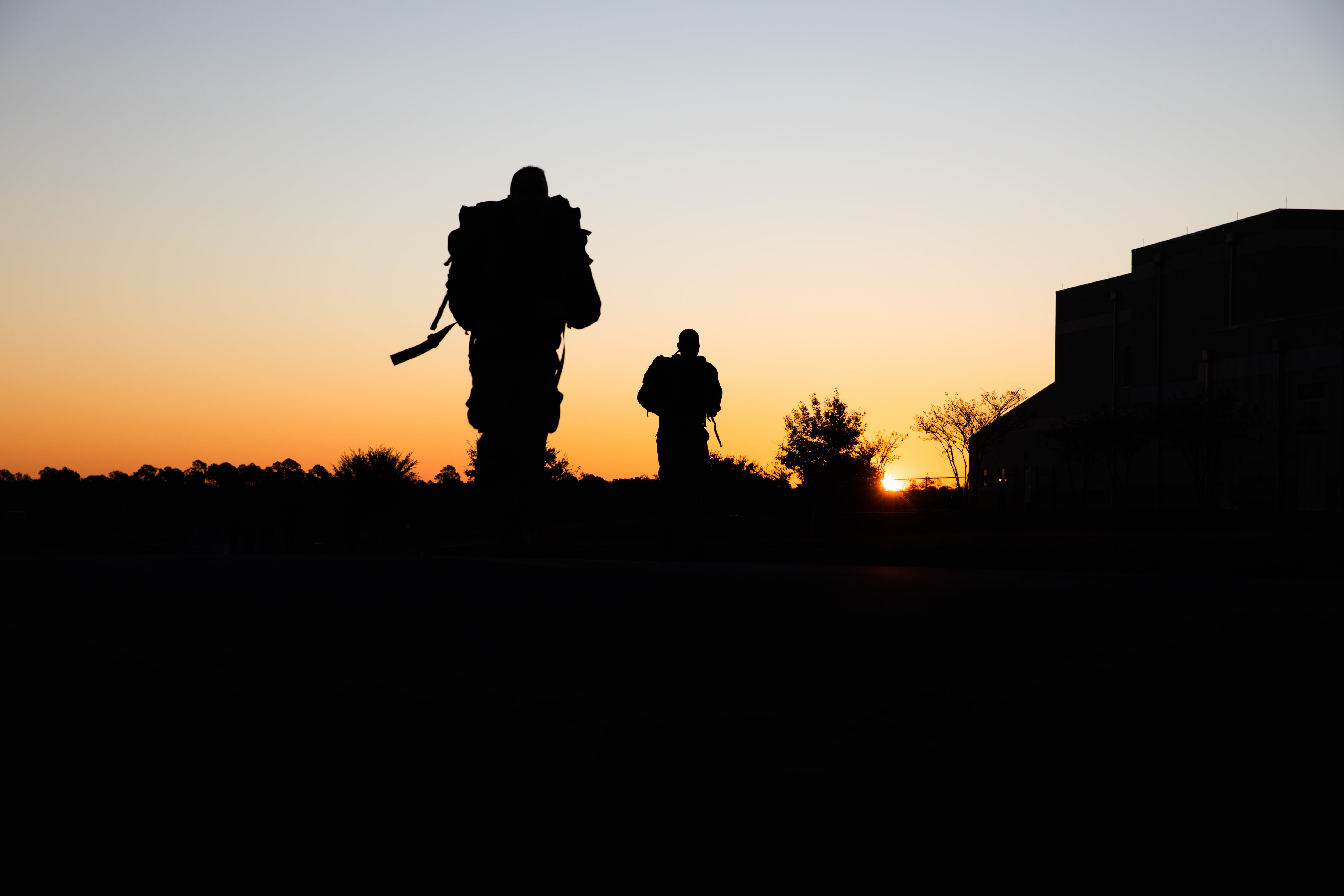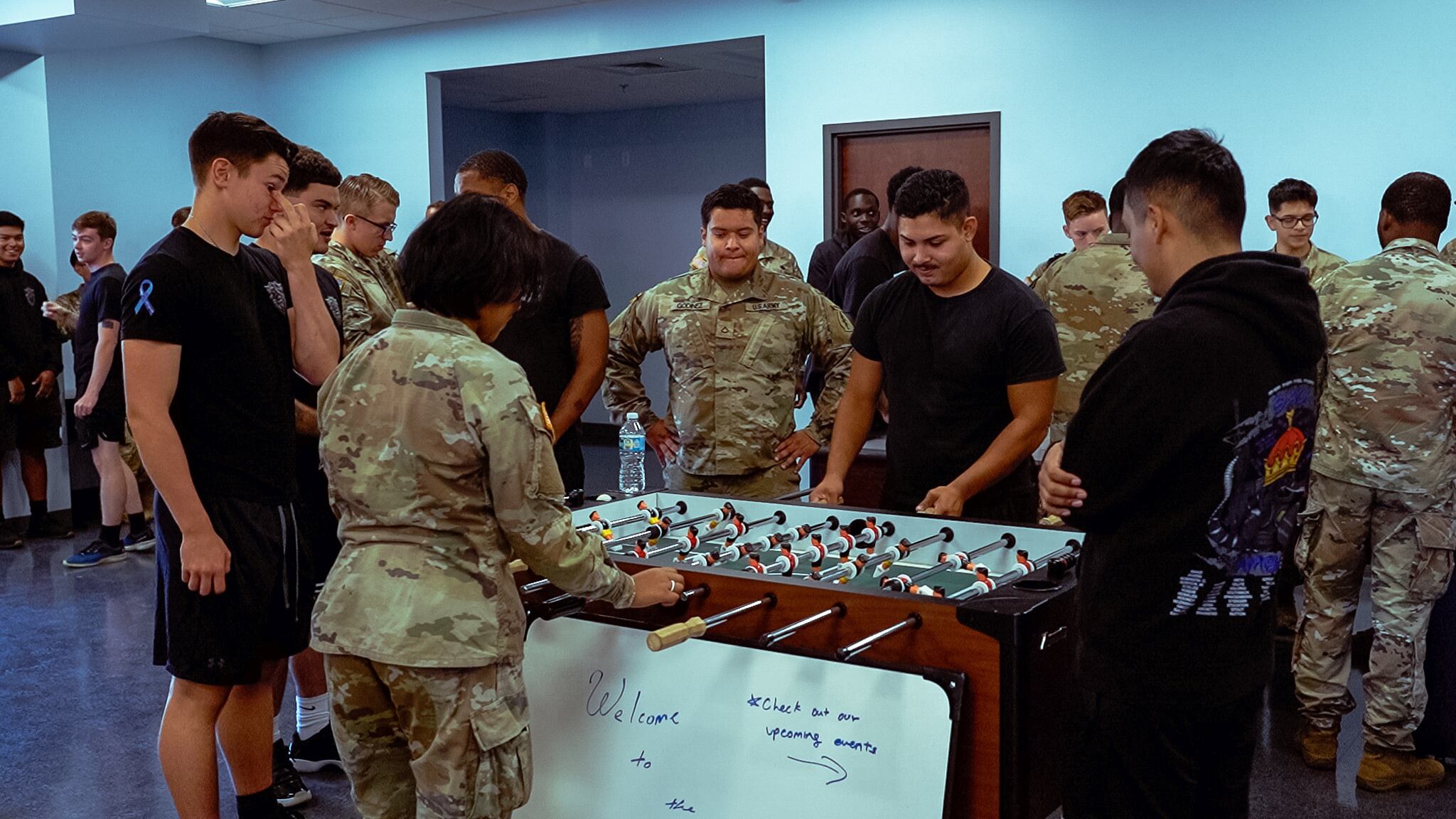A child development center will be built somewhere, sometime, to meet the needs of Army, Navy, Air Force and other service personnel working at or living near Camp Bull Simons, Florida, who have long struggled to find child care.
But “the location is still officially undecided,” said J. Elise Van Pool, a spokeswoman for U.S. Army Special Operations Command. The Army and the families of troops with 7th Special Forces Group want the CDC on the camp where service members work.
In fact, the Army has budgeted about $16 million in fiscal 2025 for the center, anticipating it will be located on Camp Bull Simons. But the Air Force says it is concerned about the children’s safety because the camp is adjacent to an active bombing range. Air Force officials are planning to use military construction funds to build the center on federal land in the city of Crestview, just north of the camp, where most of the families live.
Despite the Air Force’s stance, Army Special Operations Command officials “feel confident in the current safety protocols for [Camp Bull Simons] and think the addition of a CDC doesn’t represent an increased risk,” Van Pool said. She noted that Air Force officials are still surveying possible locations for the CDC and no money has been appropriated to buy the land needed.
“A CDC in Crestview would be acceptable,” she said. “However, we have concerns that building off the installation will cause additional delays. The need for child care is an acute problem, and we are trying to avoid unnecessary delays.”
Many thought the issue was decided.
In October, Secretary of the Army Christine Wormuth announced that “working closely with the Air Force, we now have plans to build a new CDC at Camp Bull Simons” in fiscal 2025. More recently, at a public meeting on April 25, Army Lt. Gen. Kevin Vereen, deputy chief of staff for the operations (G-9) directorate, said, “I can assure, I can almost guarantee, that we’ll have a CDC at Camp Bull Simons and it will be an Army CDC.”
He did acknowledge, however, that “we’re in the middle of trying to figure this one out.”

Unusual beginning
As part of the 2005 Base Realignment and Closure action, Camp Bull Simons was carved out of an Eglin Air Force Base bombing range that the service uses in its testing mission.
Due to testing of hypersonic weapons, long-range standoff systems and other tests, the risk to children is too great to have the child care center on the Army camp, said Brig. Gen. Jeffrey T. Geraghty, commander of the 96th Test Wing at Eglin, in an interview with Military Times.
Geraghty serves as the installation commander at Eglin, as well as the range operating authority, responsible for mitigating risk and ensuring that nothing encroaches upon the test facility.
The ball is now in the Defense Department’s court, Geraghty said. “They’re doing a pretty comprehensive study to determine the risks on the range,” he said. The DoD Test Resource Management Center is doing the study “to make sure the Army concerns are addressed, Air Force concerns are addressed, national security and weapons test concerns are addressed, and encroachment concerns on our national defense ranges are addressed,” he said.
That study is expected to be finished in September; a decision will be made later in the year on the location, a process which could further delay construction.
“I believe this is going to find the right solution because the Army and Air Force are working together at the highest levels,” Geraghty said. “Perhaps the reason you don’t hear the Air Force coming out with as strong a position as the Army has, is that right now the ball is really in the court of the Office of the Secretary of Defense.”
“We do acknowledge that that’s a hardship for the Team Eglin families that live up there to have to come down here to Eglin main to get day care,” Geraghty said.
“So, that’s the problem we’re working on, big picture, the fastest we can, to get a child development center that services those families that live north of the range. That’s Army, Navy, Air Force, Space Force. We want to give them a child care facility up there.”
Families are “grateful that we’re working to bring child care up closer to where they live, up there in the city of Crestview,” Geraghty said. “Those who live up there but don’t work at Camp Bull Simons are especially excited about it.”
About 60% of 7th SFG families live in Crestview. He’s also been letting them know that the longer term plan is to take care of their medical needs closer to home, with a military treatment facility and a Veterans Affairs facility.
RELATED

“The good news is there’s going to be a child development center no matter what,” said Stu Bradin, president and CEO of the Global SOF Foundation, who has been an advocate for the families at Camp Bull Simons. “The bad news is there’s all these shenanigans going on to keep it from going to the optimal place. It’s not the end of the world, but it’s not optimal,” he said.
Some service members live in lower Alabama and drive an hour south to the camp, “because they can’t afford to live there. They don’t have the money even to live in Crestview,” Bradin said. There are also families who live closer to Pensacola, who would have to drive 15 miles further north to Crestview to drop off their children.

“It’s easier to drop your child off where you work. But anything is better than driving to Eglin, if it’s a government facility. The good thing about the military CDC is that they have high standards,” he said, and can adjust their hours to meet operational needs.
Families like the security of having their military child development center within a military installation, too. Geraghty said officials haven’t yet worked through the details on security. “But those are risks we are aware of, and we would certainly mitigate those as we build a child care center up there in the town of Crestview, too.”
Safety concerns rising
So, why are there safety concerns now if people have been living and working on Camp Bull Simons for more than a decade?
There have been no evacuations of the camp to date, Van Pool said, but they have been notified the 96th Test Wing may order one in the near future.
“The tests and the maneuvers, the weapons and the systems that we’re starting to test now are different than they have been for the past 15, 20 years that we’ve been focused on the global war on terrorism,” Geraghty said.
For years, the Air Force bent over backward to avoid having to evacuate Camp Bull Simons, he said, modifying its tests and employment of weapons. While normally they would test weapons at a certain altitude and air speed, they took some risks and tested at a lower altitude or air speed.
“We’d do some engineering analysis and say, ‘Hey in a war, it would probably still work even though we didn’t test it at the actual conditions.’
“We had accepted some risk, and our weapons weren’t as fleshed out as we are now making sure they are. That’s why we now have to move to start testing those weapons systems much closer to their full capability, which is drawing us to have to ask soldiers on Camp Bull Simons to … evacuate,” he said, noting that one such evacuation is coming in June.
“We are pivoting towards this preparation for this high-end conflict.”
They’ve worked with the commands at Camp Bull Simons to minimize any mission impact on them, he said.
Bradin questioned the concerns about a child care center, given that there have been barracks, a chapel, a troop clinic, a shopette and other services on Camp Bull Simons for years. “What is the risk mitigation for them? Are they putting bunkers there?” he asked.

“Those facilities were put there to take care of the morale and welfare of the soldiers and the people who were supporting the mission on the range up there,” Geraghty said. “There is some level of aggregate risk that we take in service to our nation that soldiers are certainly cognizant of when they sign up to serve.
“The adults who work in support of the mission on the range are cognizant of those risks,” he said.
“Let’s take care of our children and our child care needs outside of the range,” he said.
Karen has covered military families, quality of life and consumer issues for Military Times for more than 30 years, and is co-author of a chapter on media coverage of military families in the book "A Battle Plan for Supporting Military Families." She previously worked for newspapers in Guam, Norfolk, Jacksonville, Fla., and Athens, Ga.





